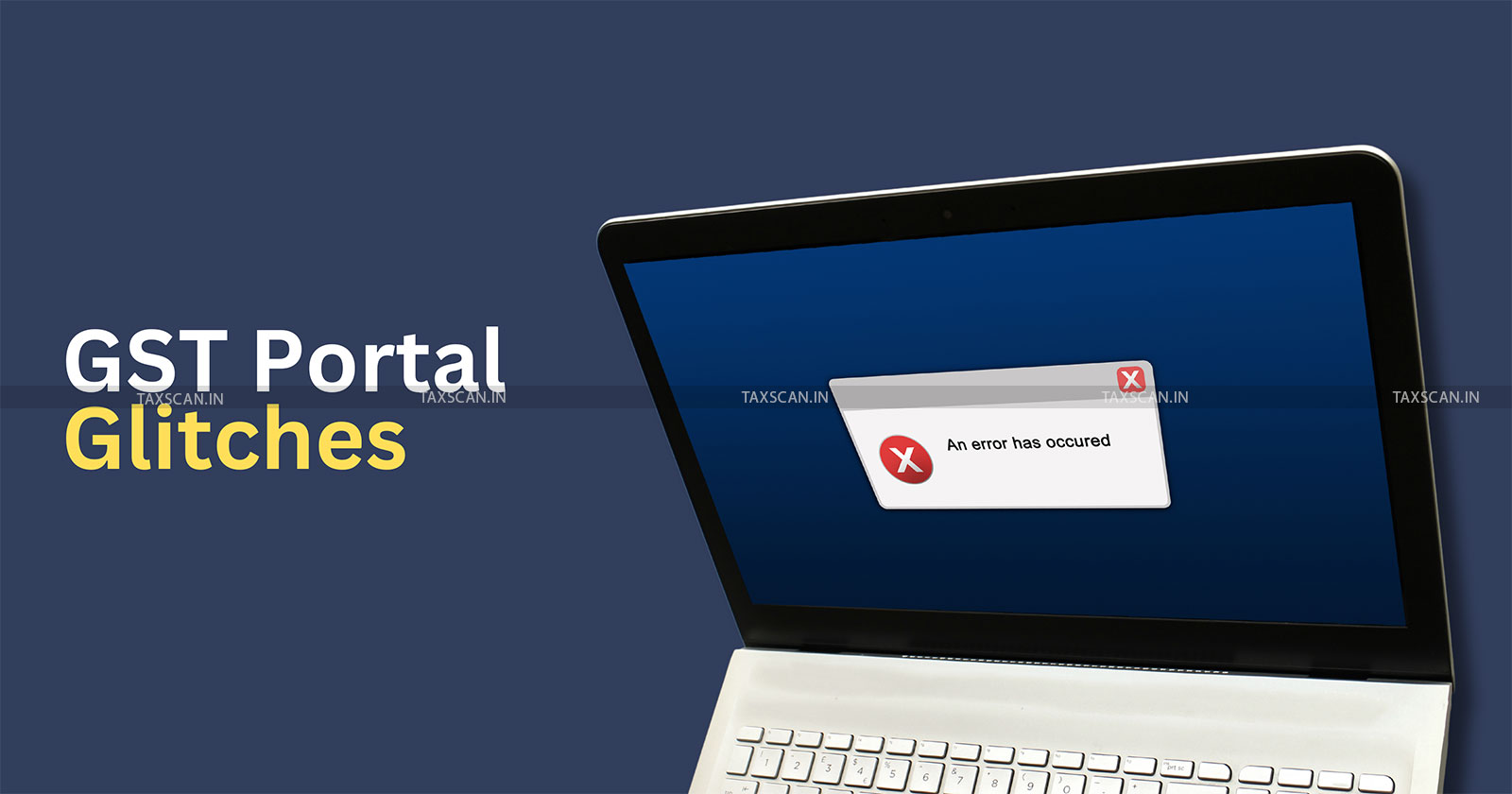GST Portal Glitches: A comprehensive Overview, Challenges and Mitigation Measures
The CBIC and GST department have issued notifications extending deadlines or waiving penalties after acknowledging portal failures. Recently, GSTN’s advisory after the Jan 2025 GSTR-1 glitch reassured taxpayers and provided a grace period

India’s Goods and Services Tax (GST) portal is a vital component in ensuring seamless tax compliance for over a crore businesses. The persistent technical glitches often disrupt filings, delay input credit claims, and create compliance risks. While the government continues to improve the system, these hiccups have real-world consequences, especially for small businesses and exporters.
This Article explores the nature of GST portal glitches, recent incidents, the sectors most impacted, and practical recommendations to mitigate such challenges.
Technical Glitches faced by Businesses
The Businesses which encounter the following types of technical issues on the GST portal:
1. Portal Downtime and Login Failures: Scheduled and unscheduled maintenance windows often lead to system downtime, leaving users unable to access their accounts. On multiple occasions, login services have been interrupted near filing deadlines.
Complete Ready to Use PDFs of 200+ Agreements Click here
2. Return Filing Errors: Glitches while submitting GSTR-1 (outward supplies) or GSTR-3B (monthly summary returns) are common. These include errors while generating summaries, uploading invoices, or freezing after data entry.
3. Incorrect Auto-Population: Mismatches or missing data in auto-populated fields in GSTR-3B or GSTR-2B can result in incorrect filings or overstated input tax credit (ITC).
4. Invoice Matching Errors: Errors in invoice matching mechanisms can lead to duplication or omission in ITC claims, requiring manual reconciliation.
5. Payment Gateway Failures: Taxpayers frequently report scenarios where payments are debited from their bank but fail to reflect in the GST portal, causing compliance and cash flow issues.
6. Other Technical Issues: Problems such as non-functional buttons, page timeouts, and data submission errors increase during peak filing periods.
GST READY RECKONER: Complete Topic wise Circulars, Instructions & Guidelines Click here
Recent Glitches and Their Impacts
Several notable incidents in the past few years illustrate the extent of GST portal failures:
- April 2022 Auto-Population Failure: A glitch prevented generation of April’s GSTR-2B and auto-population of GSTR-3B, affecting thousands of taxpayers. The CBIC had to consider deadline extensions.
- August 2023 Filing Outage: The GST portal crashed on the last date for filing GSTR-1 for July 2023, affecting timely compliance. Many businesses faced late fees despite the issue being technical in nature.
- September–October 2024 Duplicate Entries: A duplication error in GSTR-2B caused the same invoice to appear twice, inflating eligible ITC. Taxpayers had to manually correct their returns to avoid over-claiming.
- January 2025 GSTR-1 Submission Failure: The portal failed to generate summaries on the due date, prompting the government to extend deadlines by two days through Notification 01/2025.
- E-Way Bill Glitch on Dec 31, 2024: Transporters were unable to generate e-way bills, risking non-compliance penalties. The department extended the time window for generation till Jan 1, 2025, offering relief.
Step by Step Guide of Preparing Company Balance Sheet and Profit & Loss Account Click Here
Sectors and Businesses Most Affected
While all businesses are affected to GST glitches, certain categories bear a significant burden:
- MSMEs (Micro, Small, Medium Enterprises): Lacking robust IT infrastructure or tax consultants, small businesses struggle to resolve glitches and risk missing compliance deadlines.
- Exporters: Exporters often depend on timely refunds of IGST or unutilized ITC. Portal issues delay refund processing and disrupt cash flow.
- High-Volume Filers: Large companies with hundreds of daily invoices or e-invoice requirements are severely impacted when systems fail, as compliance is complex and time-bound.
- Transport and Logistics Sector: E-way bill generation failures directly stall the movement of goods, leading to supply chain disruptions and potential penalties.
Judicial Responses and Government Relief
Courts have also intervened when glitches result in penalties or missed deadlines:
- The Allahabad High Court ruled in 2024 that non-generation of e-invoice due to portal errors does not warrant penal action if other documents are in order.
- The Telangana High Court held that tax compliance completed via an alternate state portal due to glitches was valid and not liable for penalty.
The CBIC and GST department have issued notifications extending deadlines or waiving penalties after acknowledging portal failures. For instance, GSTN’s advisory after the Jan 2025 GSTR-1 glitch reassured taxpayers and provided a grace period.
Complete Ready to Use PDFs of 200+ Agreements Click here
Recommendations and Mitigation Strategies
To reduce portal-related impacts, businesses should consider the following steps:
- File Early: Avoid last-day filing to steer clear of traffic spikes and potential outages.
- Monitor Official Channels: Follow GSTN and CBIC updates regularly on Twitter and the GST portal for real-time announcements.
- Keep Evidence of Glitches: Take screenshots, note timestamps, and document system errors to support appeals against penalties.
- Use Offline Tools: Prepare returns using GST offline utilities to minimize time on the portal.
- Raise Tickets Promptly: Use the grievance redressal system (Form PMT-07 for payments) to log errors and ensure timely rectification.
- Engage Professionals: Tax consultants can assist with compliance strategy and alternate workarounds during system failures.
- Plan Cash Flow: Maintain liquidity buffers in case of delayed ITC or refunds due to system glitches.
Conclusion
While GST portal glitches may not be entirely avoidable in a large, complex tax system, their recurring nature places a significant compliance and financial burden on businesses. The government’s willingness to extend deadlines or offer relief is helpful, but businesses must remain vigilant, proactive, and informed to navigate these challenges effectively.
Long-term resolution will depend on systemic improvements in portal infrastructure and more responsive technical support by GSTN and its service providers.
Support our journalism by subscribing to Taxscan premium. Follow us on Telegram for quick updates


